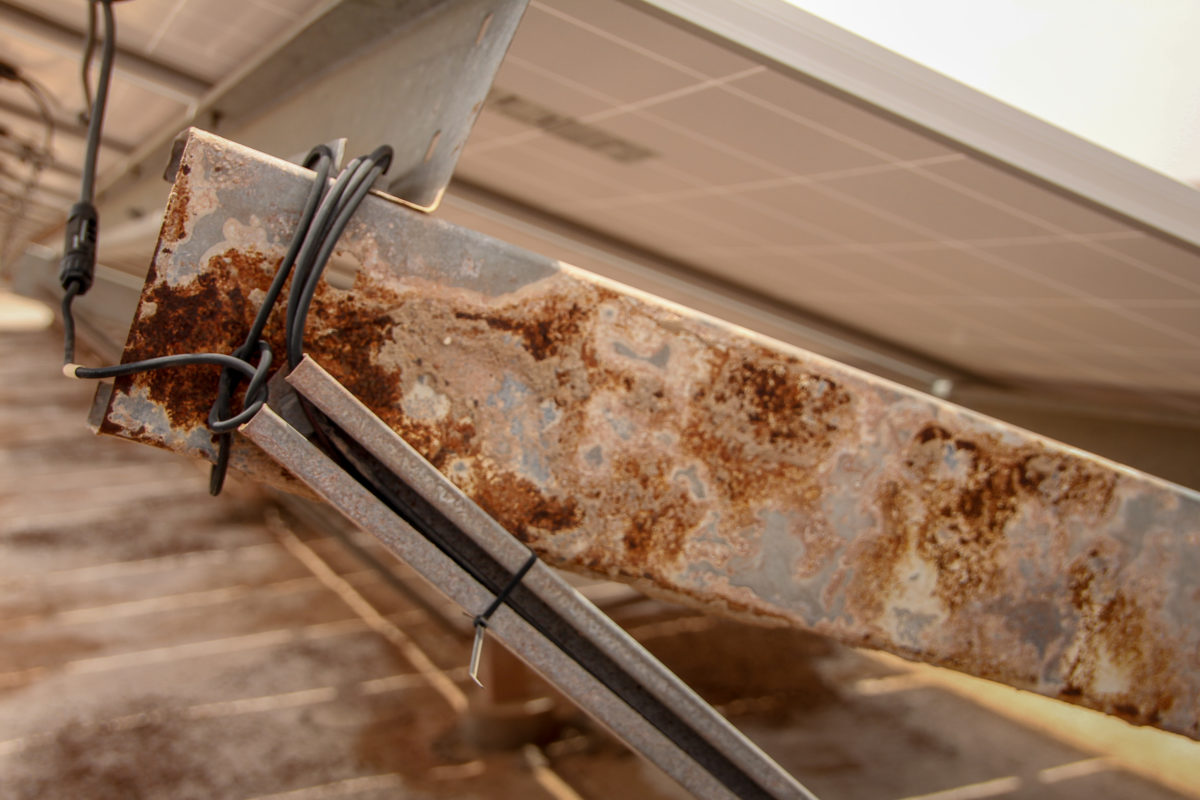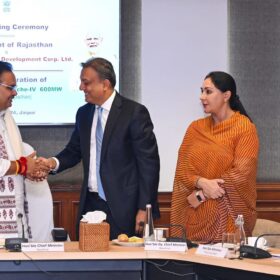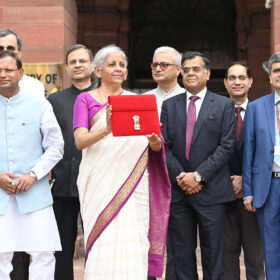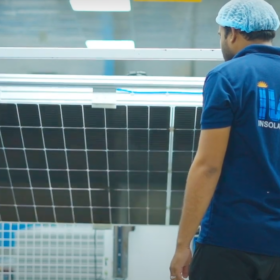With India set to become the world’s largest carbon emitter in the next seven years, as well as the world’s most populous country and biggest energy consumer, energy leaders at the 13th Renewable Energy India (REI) conference were vociferous about the need for sustainable growth.
Industry heads also called for a robust renewables ecosystem with recycling as an essential cog in the wheel, better technology and enabling policies and regulations at the conference in Greater Noida, which opened yesterday and will close tomorrow.
Moderating an energy leaders session at New Delhi’s India Expo Mart, Somesh Kumar – partner and head of power and utilities at Ernst & Young – began with a look at India’s renewable energy (RE) trajectory.
Clean energy generation capacity in the country has exploded from 200 MW in 2012 to 356 GW today and contributes 22% of India’s power. Seven years ago it took six months to complete a 5 MW solar installation, today a 100 MW facility can be activated in the same timescale.
‘The market has to take over’
That has all been achieved thanks to a supportive environment for green power, said Kumar, who contrasted those successes with an Indian present marred by protectionist tariffs, failing attempts to establish domestic solar manufacturing, electricity transmission charge uncertainty and a lack of coordination between federal and state governments.
However Santosh Khatesal, MD of engineering, procurement and construction services company Enerparc Energy, said the renewables sector had outgrown policy support. “Policies create [a supportive] ecosystem and ramp up everything,” he said. “But external injection of policy becomes redundant when a sector attains maturity. Policy is an enabler but ultimately the market has to take over. India’s RE sector is ripe for private consumption.”
Anuvrat Joshi, head of business development for PV developer Cleantech Solar agreed, and added: “Regulations and regulators are not what makes a market big. The financial health of discoms [power distribution companies] is grave and open access [for corporate customers] is gaining traction. Currently, nearly 20% of power is open access and [systems] need to [be] better operationalized.”
Look to China
Daniel Liu, South Asia MD at Chinese solar manufacturer Jinko Solar, took a different tack by lamenting a lack of renewables policy in India. Citing the example of China, Liu mentioned how the world’s solar superpower has stepped beyond incentives and subsidies for specific projects to instead support infrastructure that creates an environment for growth.
“In China, highways are higher, electricity cheaper and water supply more stable,” Liu said adding such factors helped turn China into a manufacturing giant. “In India, safeguard duty was a huge dampener. Add to it the reality that manufacturing-linked tenders find no takers and are being cancelled. Because of [the] lack of [a] value chain and ecosystem, profit in manufacturing is too small to lure an investor.”
Arvind Reddy, CEO of Innolia Energy, offered a defense of Indian policymakers. The Californian solar panel and lithium battery manufacturer has invested $30 million (Rs213 crore) in a battery manufacturing unit in India, a move made easier by the nation’s impressive climb up this year’s Ease of Doing Business ranking, compiled by the World Bank.
Recycling concerns
“Ease of Doing Business has been a great enabler and subsidies to EV [electric vehicle] manufacturers has really given the market a boost,” said Reddy. “Presently there is a huge demand for batteries but one needs to look at the longevity of demand. Predictability of demand will come from a longer roadmap.”
While energy leaders discussed policy, regulation and how private enterprise can drive the market, attendees were more interested in hearing what will happen to end-of-life renewable energy systems. With no renewables recycling or disposal policies in place in India, the audience wanted to know if clean energy will become the new plastic – the next environmental disaster.
“In the beginning, selling silicone waste was very lucrative,” said Cleantech’s Joshi, “roughly $400 a kilogram, which has now gone down to $20. But conscientious developers are taking steps towards the issue which, if not handled well, will turn into an environmental nightmare.”
Innolia chief executive Reddy highlighted the possibility of reusing batteries in secondary and tertiary markets.
This content is protected by copyright and may not be reused. If you want to cooperate with us and would like to reuse some of our content, please contact: editors@pv-magazine.com.








3 comments
By submitting this form you agree to pv magazine using your data for the purposes of publishing your comment.
Your personal data will only be disclosed or otherwise transmitted to third parties for the purposes of spam filtering or if this is necessary for technical maintenance of the website. Any other transfer to third parties will not take place unless this is justified on the basis of applicable data protection regulations or if pv magazine is legally obliged to do so.
You may revoke this consent at any time with effect for the future, in which case your personal data will be deleted immediately. Otherwise, your data will be deleted if pv magazine has processed your request or the purpose of data storage is fulfilled.
Further information on data privacy can be found in our Data Protection Policy.